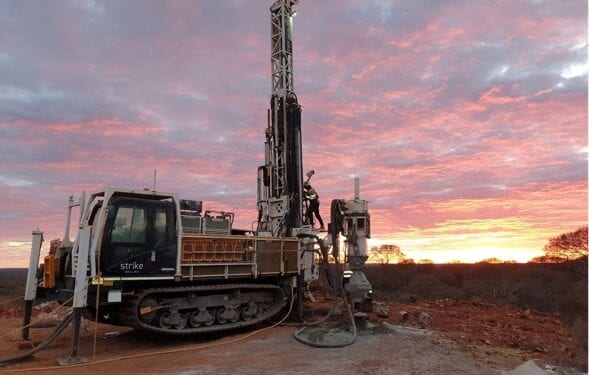Promising New Targets Identified By Western Australian Nickel Hunter
St George Mining Limited (ASX: SGQ) has identified three strong new, New off-hole electromagnetic (EM) conductors have been identified by downhole EM (DHEM) surveys at its flagship high-grade Mt Alexander Project, located in the north-eastern Goldfields of Western Australia.
Hole MAD199 is currently being drilled to test the new 19,320 Siemens conductor identified from the DHEM survey in MAD195. The diamond drill rig is operating with two crews, allowing for drilling 24/7.
Drilling of MAD199 is at 64.2m downhole with the EM plate predicted to be intersected at 350m downhole.
Executive Chairman, John Prineas, said the targeted EM plate is modelled north-east from MAD195, within the down-dip extension of the intrusive unit. He said this is an ideal location for the potential extension of nickel-copper sulphides at depth.
“The science continues to support the potential for further significant mineralisation to be present in the large intrusive mineral system at the Cathedrals Belt,” Mr Prineas said.
“The recent petrographic analysis indicated that the nickel-copper sulphides in the Cathedrals Belt are likely to have been associated with a large igneous event and the product of multiple magma pulses – factors that support the potential for a large mineral deposit in the Cathedrals Belt and elsewhere in the wider project area.
“It is very pleasing to therefore see the latest downhole EM survey data at Investigators and West End identify larger and more powerful EM plates than previous analysis had recognised.
“Some of the new EM plates are located down-dip of known mineralisation at a depth that ground-based EM surveys are unlikely to have screened effectively. With very little drilling in this area, the new EM conductors are excellent targets for the potential discovery of nickel-copper sulphides at depth.
“We are also excited by the results of the new magnetic survey conducted over two of our 100%-owned tenements E29/972 and E29/1041. The strong features identified are similar to the magnetic signature of the highly mineralised Cathedrals Belt, giving encouragement that these new targets have potential to represent intrusive rocks with mineralisation. These targets will be drilled as soon as practicable.
“The deep exploratory hole drilled at West End has intersected intrusive style rocks on the same horizon and setting as the intrusive unit identified by drilling along other sections of the Cathedrals Belt. This latest hole was completed 200m to the west of previous drilling at West End. The result has extended the strike of the intrusive unit to more than 6.5km and confirmed the western flank of West End – as the Cathedrals Belt approaches the Ida Fault – as a prospective area for nickel-copper sulphide mineralisation.
“Our field work continues in full-swing and we look forward to reporting more exploration results as we continue to scope out the full high-grade mineral potential at Mt Alexander.”












